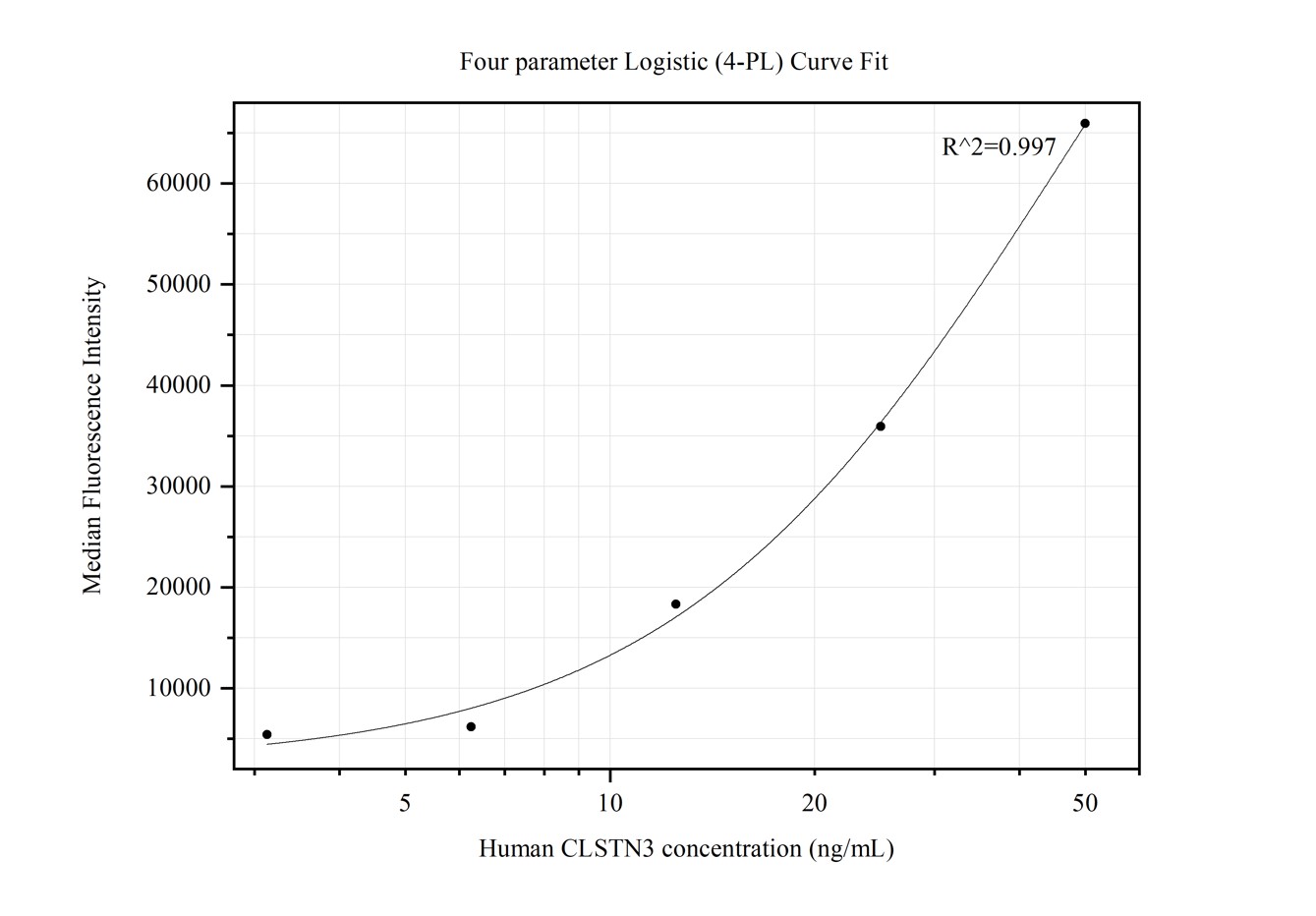验证数据展示
产品信息
68855-3-PBS targets CLSTN3 as part of a matched antibody pair:
MP50250-2: 68855-3-PBS capture and 68855-2-PBS detection (validated in Cytometric bead array)
Unconjugated mouse monoclonal antibody pair in PBS only (BSA and azide free) storage buffer at a concentration of 1 mg/mL, ready for conjugation.
This conjugation ready format makes antibodies ideal for use in many applications including: ELISAs, multiplex assays requiring matched pairs, mass cytometry, and multiplex imaging applications.Antibody use should be optimized by the end user for each application and assay.
| 经测试应用 | Cytometric bead array, Indirect ELISA Application Description |
| 经测试反应性 | human |
| 免疫原 | CLSTN3 fusion protein Ag14897 种属同源性预测 |
| 宿主/亚型 | Mouse / IgG1 |
| 抗体类别 | Monoclonal |
| 产品类型 | Antibody |
| 全称 | calsyntenin 3 |
| 别名 | Alc-beta, alcbeta, Alcadein-beta, Alcadein beta, Alc beta |
| 计算分子量 | 968 aa, 107 kDa |
| GenBank蛋白编号 | BC039075 |
| 基因名称 | CLSTN3 |
| Gene ID (NCBI) | 9746 |
| 偶联类型 | Unconjugated |
| 形式 | Liquid |
| 纯化方式 | Protein G Magarose purification |
| UNIPROT ID | Q9BQT9 |
| 储存缓冲液 | PBS only , pH 7.3 |
| 储存条件 | Store at -80°C. The product is shipped with ice packs. Upon receipt, store it immediately at -80°C |
背景介绍
Calsyntenins, also called alcadeins, are cadherin superfamily proteins first identified as synaptic proteins (PMID: 11161476; 12498782). Calsyntenins are type I transmembrane proteins with extracellular domains containing two cadherin repeats and an LNS (laminin, neurexin, sex hormone-binding globulin) domain (PMID: 24613359). Calsyntenin-3 (CLSTN3, also known as alcadein-beta) is a synapse-organizing protein that promotes the development of synapses. It is a postsynaptic adhesion molecule that binds to presynaptic neurexins to mediate both excitatory and inhibitory synapse formation (PMID: 25352602; 24613359).
